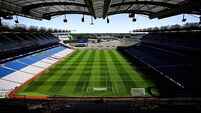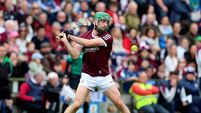Thurles talking points: Little Limerick things that tell us a lot about what’s ahead
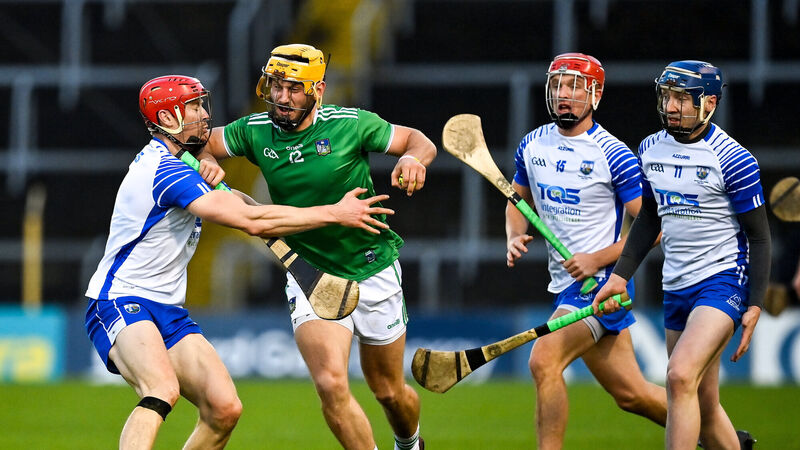
Tom Morrissey of Limerick is tackled by Tadhg De Búrca of Waterford. Picture: Brendan Moran/Sportsfile
Waterford knew coming to Thurles that they would have to match Limerick for intensity and work-rate, which is the kind of boilerplate sentence that could have been rolled out for every championship hurling match for the last 20 years.
However, Limerick bring a physical challenge like no other team in the game at present. This could be seen in the numbers.
The sides were 0-18 apiece at the second water break but Limerick had enough fuel in the tank to keep driving on in that final quarter and outscored Waterford 0-7 to 0-3.
All of which is to ask a simple question: Can Waterford bring the same level of intensity in six days’ time?
Their manager Liam Cahill said afterwards that he and his team believed they could win, and their effort certainly reflected that belief, but now they have to reach the same level again in less than a week.
In several games we’ve seen, sides begin to flag in the fourth quarter of their third game in two weeks: Cork on Saturday night, Dublin the weekend before.
Granted, next weekend is Waterford’s second in a row, not their third, but the downside of an effort as strenuous as last night’s is the struggle to reach that level again so soon.
By unofficial decree this is now pronounced without a single e-sound in it — intinsity — but yesterday’s Munster final was a good example of how it operates in the modern game.
Waterford’s commitment in the middle third of the field meant they were able to turn over Limerick ball that would usually be processed through the lines to the forwards in the first half. Specifically? On three occasions Limerick tried to flick the ball through to supply a supporting runner but a Waterford player got in the way on each occasion to win possession back.
We are also now seeing an Australian Rules-like scenario where players are being ‘stood up’ by two or three tacklers and in serious danger of being blown for overcarrying, just as Aussie Rules players are blown if caught in possession.
This led yesterday to quite a few instances of players winning possession, being swarmed by opponents, and dropping the ball immediately to avoid a whistle for taking too long to get rid of the sliotar.
Intensity isn’t all about tackling, either. Limerick showed they are kings of the blind-side run. In the first half, more than once, Kyle Hayes and Cian Lynch made long runs down the left into wide open space while play built up on the right: A quick cross-field ball by one of their teammates and the men in green would have had a telling overlap.
Limerick surprised many observers when moving Kyle Hayes from his usual centre-forward berth back to left-half-back against Tipperary, a move deemed a success given Limerick’s emphatic win. He also lined out at wing-back against Waterford yesterday, and with his size and aggression, with and without the ball, he impressed again, particularly in the second half.
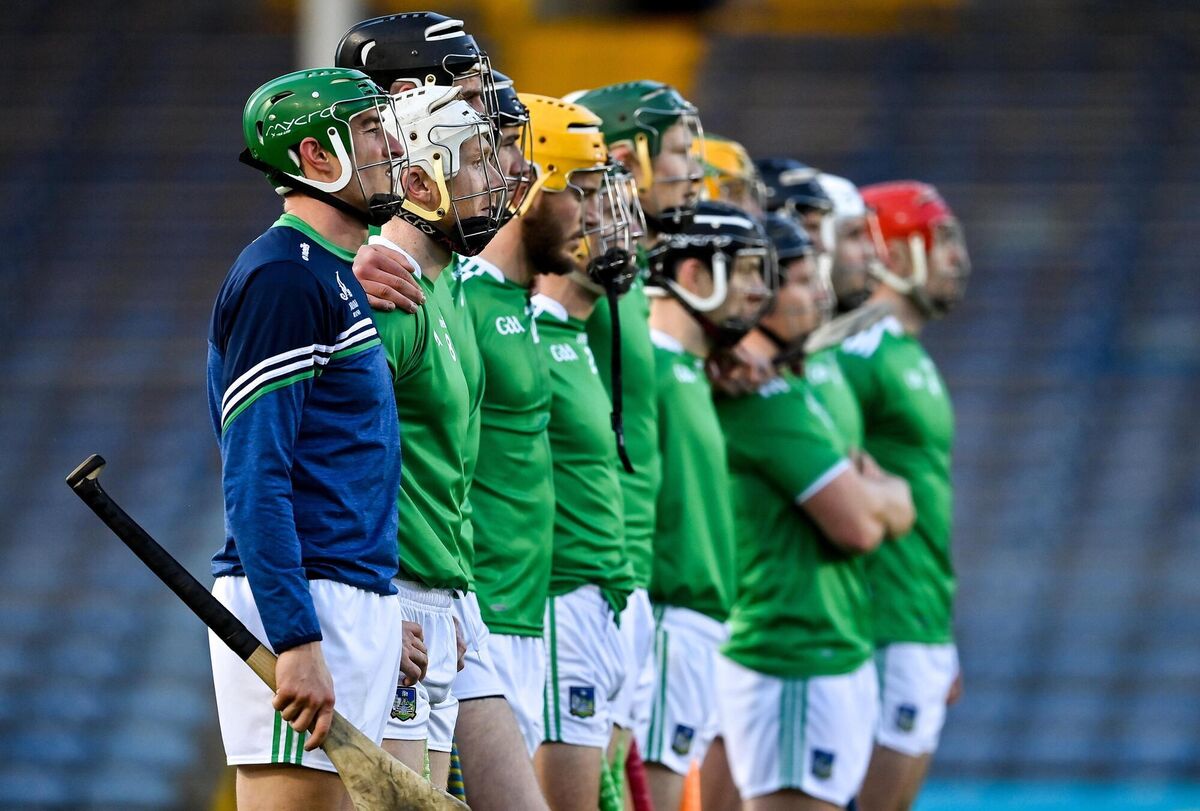
The Byrnes-Hannon-Hayes line has plenty of power and hurling in it, but is John Kiely grooming Declan Hannon’s eventual successor by giving Hayes a view of the game facing the ball? Hayes has all the physical attributes but most managers like a field general at number six; someone with the vision and attitude to read the game and respond accordingly.
If that’s the general idea with Hayes then a) it’s working well and b) the template is already there. We tend to forget now but Hannon himself burst onto the scene as a free- scoring half-forward with Limerick back in 2013 before becoming the clever distributor and link man he is today.
In the white and blue corner Liam Cahill surprised many people by naming Austin Gleeson at full-forward, though the Waterford man roamed out to centre-forward at times. The move wasn’t as successful as the Hayes switch was for Limerick though: Gleeson hit three points but was replaced before the end.
Going into yesterday’s game there was a general consensus that Limerick had the deepest pool of talent available to an inter-county team, with the contributions like those of Seamus Flanagan in the defeat of Tipperary a key exhibit in that case (sidebar: How long before we have something along the expected goals stat in soccer for “expected scores” from Gaelic games replacements?)
Limerick again thrived on their replacements last night. Flanagan came on and scored a point almost immediately, as did another substitute, Adrian Breen; further back the field Darragh O’Donovan helped to shore up the middle of the field.
Waterford didn’t get the same return from their replacements — though Patrick Curran did chip in with a point — but given the acknowledged quality Limerick have on the bench, that’s hardly an indictable offence.
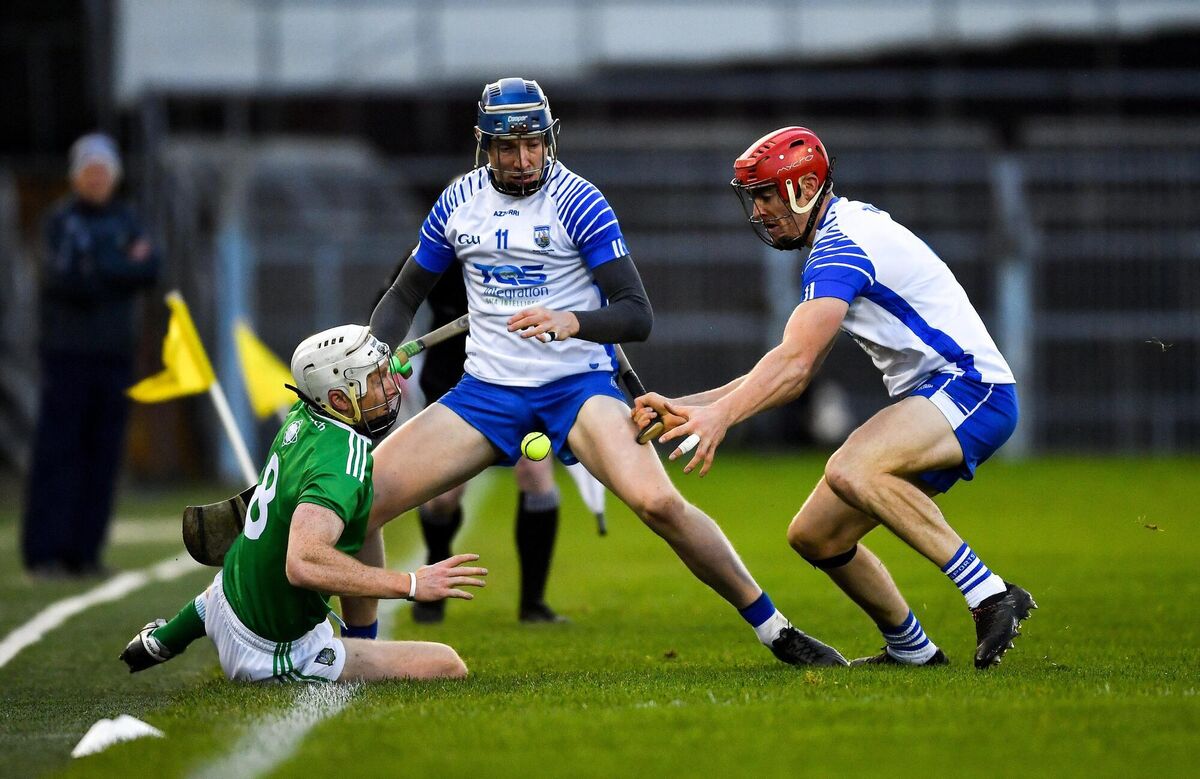
It’s also a useful indication, however, of how Limerick hurt teams just when they’re beginning to tire. Those fresh legs entering the fray at or around the time of the second water break is the kind of move that is fast becoming a Limerick trademark.
For a couple of periods in the semi-final with Cork, Waterford’s defensive cohesion seemed to break down. In one passage of play, Cork had nine consecutive shots, though they only converted one.
Similar generosity yesterday would have been disastrous, but Waterford’s defence, with Tadhg de Burca again immense at centre-back, denied Limerick any clear-cut goal chances.
The score of 0-25 managed by the Shannonsiders was on the sober side for this championship and the seven wides they struck in the second half were as much a tribute to Waterford pressure as an indication of poor shot- selection.
Yet there was a telling cameo to indicate how far Limerick have travelled to get to the level they now occupy.
At one stage in the second half, Gearóid Hegarty won a great ball near the sideline and angled over a shot while toppling sideways. Loudly encouraged by the Waterford mentors, the linesman flagged that he had carried the ball out over the sideline (a correct call to this observer).
Hegarty’s frustration was obvious, as he made clear to the linesman — but his manager could be heard shouting in the instruction for the next ball, the next ball, the next ball.
The Limerick wing-forward duly settled, backed away from the official, and got his hurley in the air to face the resulting sideline cut.
A little thing, but little things can tell a lot.




